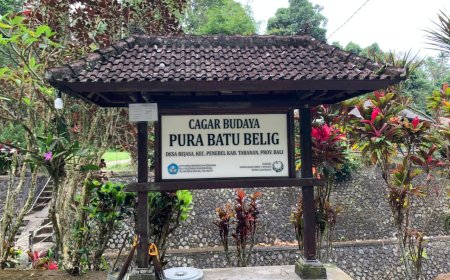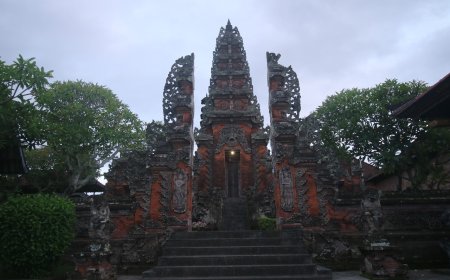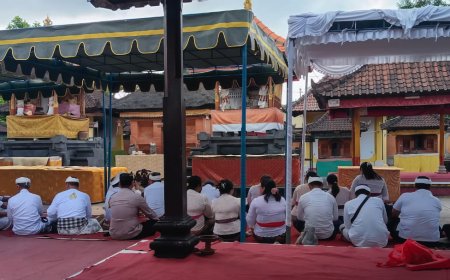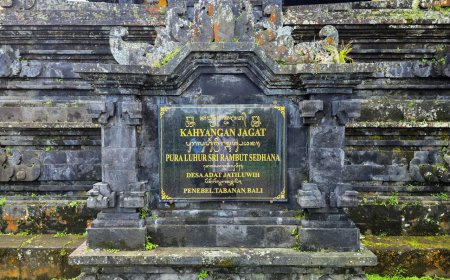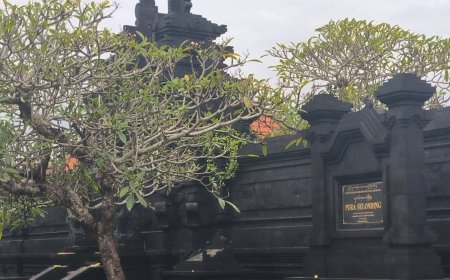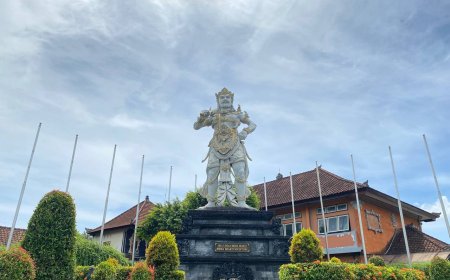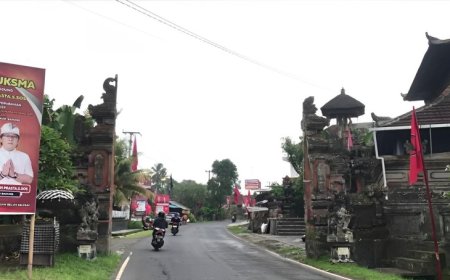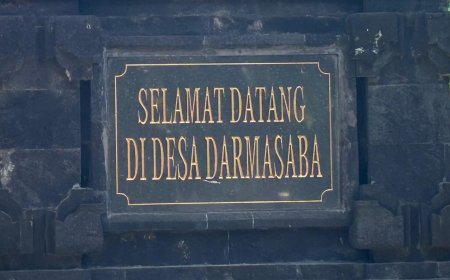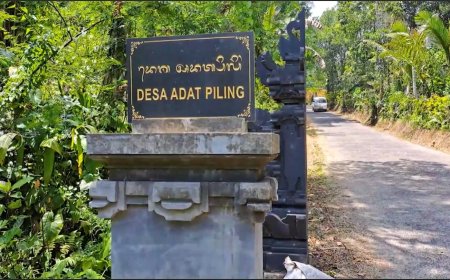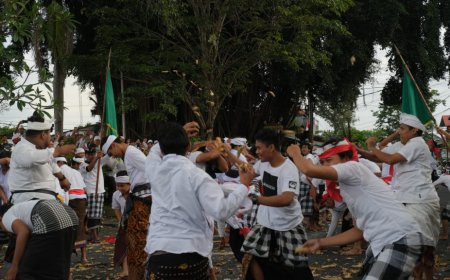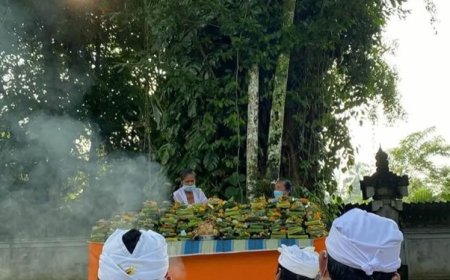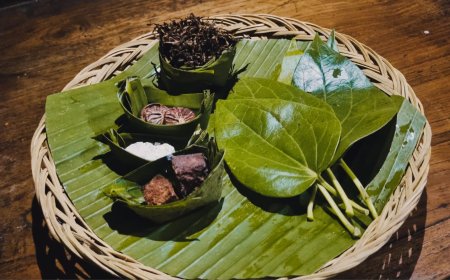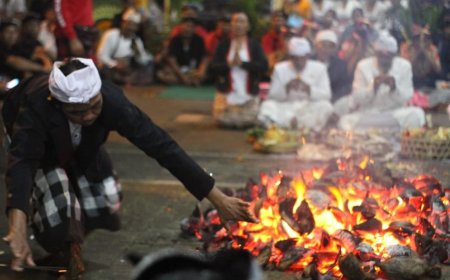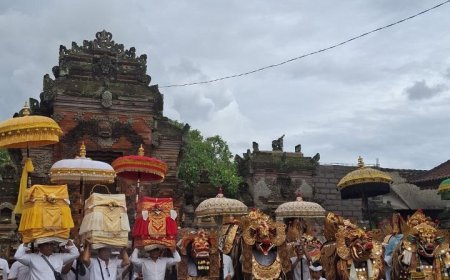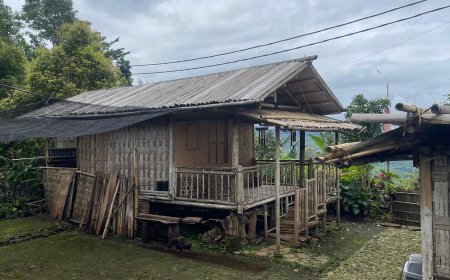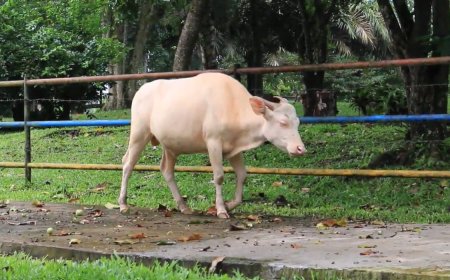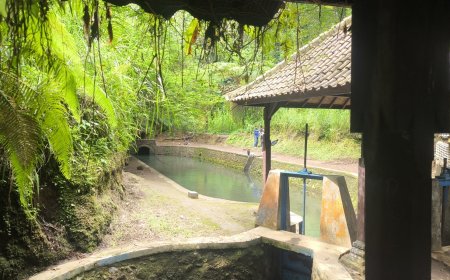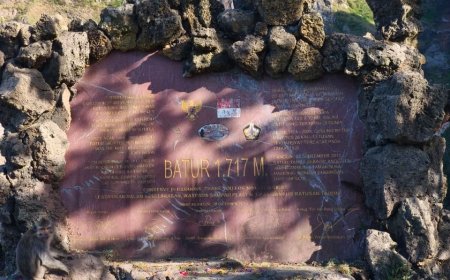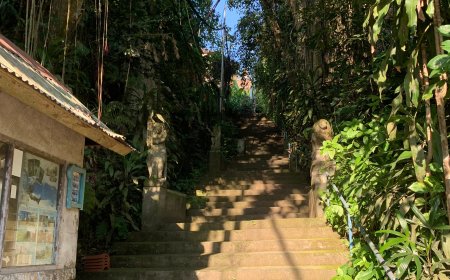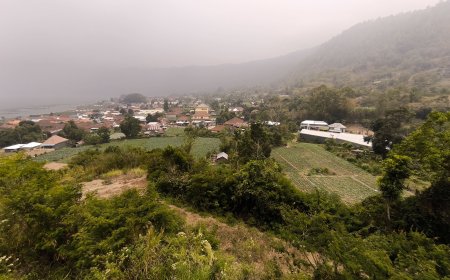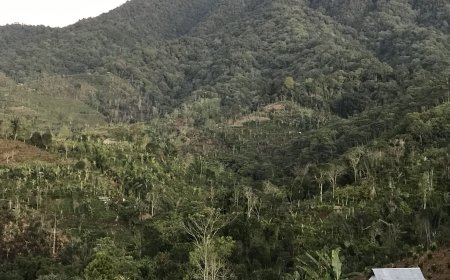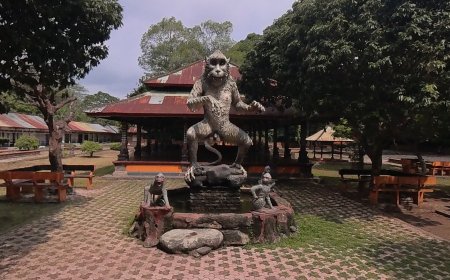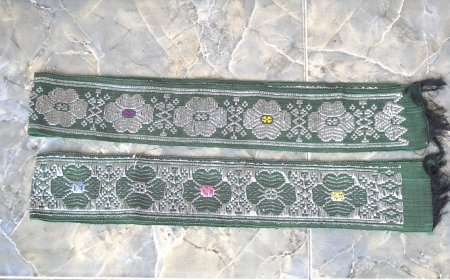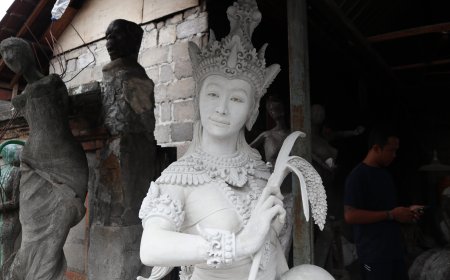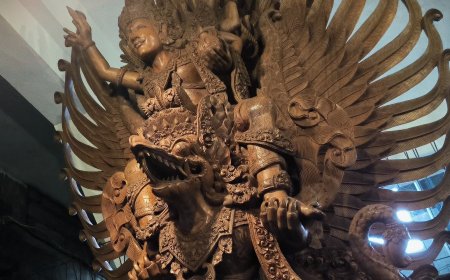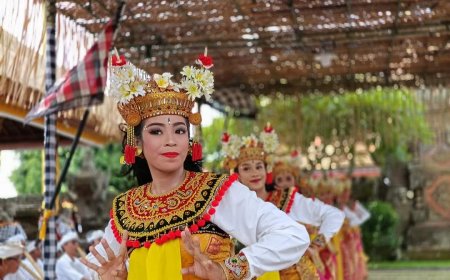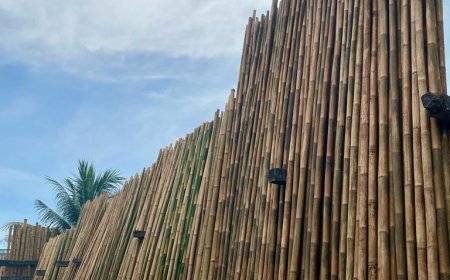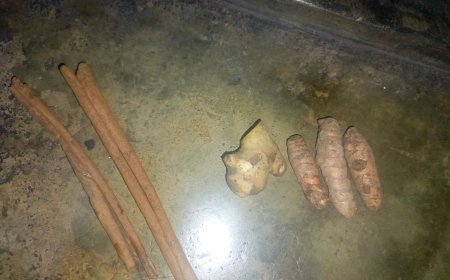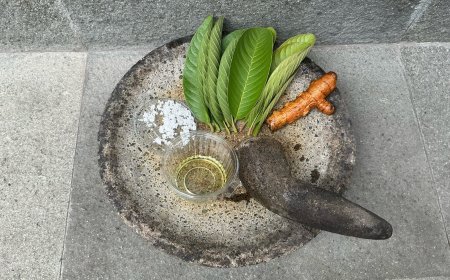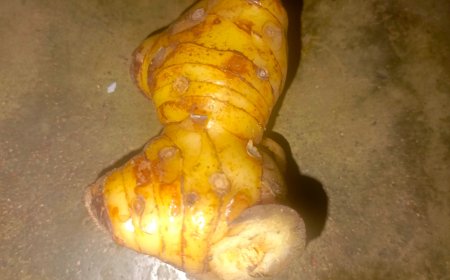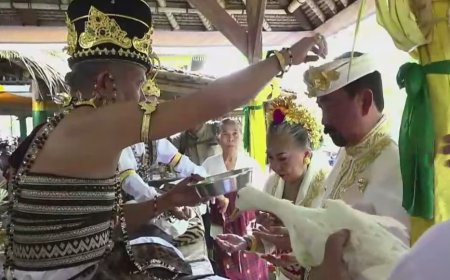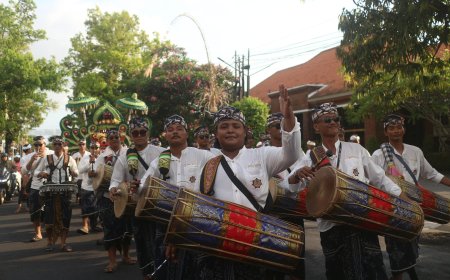Pelebon Ida Pedanda Nabe Istri Rai, Griya Gede Lelangon Sibangkaja
The Pelebon ceremony is a cultural heritage of Bali, filled with profound spiritual meaning and aesthetic beauty. On Wednesday, January 15, 2025, the Pelebon of Ida Pedanda Nabe Istri Rai at Griya Gede Lelangon, Sibangkaja, became the scene of a grand procession that blended art, tradition, and deep reverence. With its majestic cremation tower (bade), the accompaniment of Baleganjur gamelan, and rituals rich in symbolism, this ceremony harmonized humanity and the universe. Each stage of the Pelebon carries a profound message about the spiritual journey toward moksha. Discover the captivating details behind every step of this ceremony in the comprehensive explanations below.
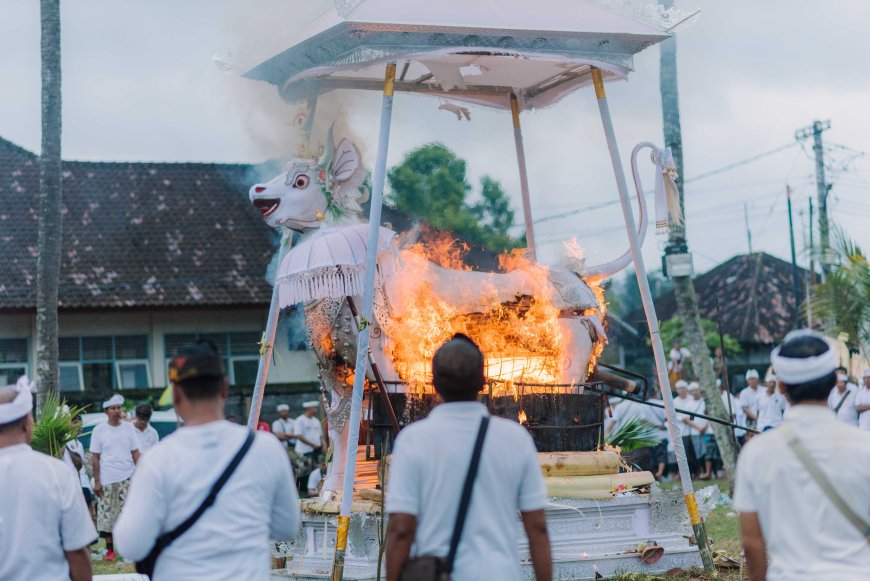
On Wednesday, January 15, 2025, the Pelebon ceremony for Ida Pedanda Nabe Istri Rai from Griya Gede Lelangon, located in Sibangkaja, was carried out. This Pelebon was a sacred traditional ceremony involving various meaningful processes, reflecting deep respect for Ida Pedanda as a spiritual leader. Each stage of the ceremony carries symbolic meaning aimed at guiding their soul to moksha, the eternal freedom from the cycle of reincarnation.

Ceremony Preparation Before the Bade Procession (Source: Personal Collection)
In this stage, a purification ceremony is performed to spiritually prepare the body of Ida Pedanda before the Pelebon procession begins. The ritual includes offerings and prayers led by religious leaders or family members. The body is placed temporarily in a sacred bale with symbolic ornaments as a gesture of respect. Outside the griya, the majestic bade, adorned with intricate traditional ornaments, is also consecrated with prayers and offerings. This bade serves as the centerpiece of attention, symbolizing the grandeur of Balinese traditions in guiding the holy soul’s journey.

The Procession of the Bade Toward the Cremation Site (Source: Personal Collection)
The bade, a towering cremation structure decorated beautifully, is carried by the community and family members with great enthusiasm. The procession is accompanied by Baleganjur gamelan, enhancing the sacred and solemn atmosphere. The bade is also rotated at crossroads (catus patha) to sever the soul’s ties to the earthly realm and channel sacred energy for its spiritual journey.

Sacred Dance Performed Before the Pelebon (Source: Personal Collection)
Traditional dances are performed as part of the homage and prayers to Ida Pedanda. These sacred dances are usually performed by trained dancers, accompanied by gamelan music, symbolizing purification and guiding the soul toward the spiritual realm. It is a spiritual moment that showcases the harmony of art and ritual.

The Transfer of the Body to the Bade (Source: Personal Collection)
The body is moved from the temporary resting place into the bade with full respect and proper rituals. This stage is conducted by close family members and religious leaders while chanting sacred prayers. This transfer marks the beginning of the spiritual journey of the deceased toward the sacred cremation process.

The Body and Family Circling the Bade Before Placement Inside (Source: Personal Collection)
A ritual of circling the bade is performed by the body and close family members to offer their final blessings and prayers. This act is believed to symbolize the soul’s departure toward moksha with the family’s blessings. This ceremony also involves the scattering of flowers and offerings around the bade.

Placement of the Body Inside the Bade (Source: Personal Collection)
After completing the circling ritual, the body is carefully placed inside the bade. The family and religious leaders carry out this process while reciting prayers and mantras to ensure the soul’s journey proceeds smoothly. The bade serves as a symbolic vessel to carry the soul to a higher spiritual realm.

The Burning of the Bade (Source: Personal Collection)
The burning of the bade becomes the climax of the Pelebon, where the body is consumed by flames as a symbol of purification. Fire represents a cleansing element that frees the soul from earthly attachments. This process is witnessed by the family, community, and religious leaders in a solemn and emotional atmosphere.

Collecting Cremation Ashes to Be Released Into the Ocean (Source: Personal Collection)
After the cremation process is completed, the ashes are carefully collected. These ashes are then taken to the ocean or a river to be scattered as a symbol of returning the body’s elements to the universe. This ritual marks the conclusion of the Pelebon and the release of the soul toward moksha.
The Pelebon ceremony of Ida Pedanda Nabe Istri Rai at Griya Gede Lelangon Sibangkaja on Wednesday, January 15, 2025, was not merely a cultural ritual but also a profound tribute to tradition and spiritual values passed down through generations. Every stage of this ceremony, from preparation to the scattering of ashes, reflects the harmony between humans, nature, and the Creator. This Pelebon was not just a physical farewell but also a spiritual journey guiding the soul toward moksha, the realm of eternal liberation. This procession serves as a reminder of the importance of preserving tradition as a form of respect for ancestors and the rich wisdom embedded in local culture.
